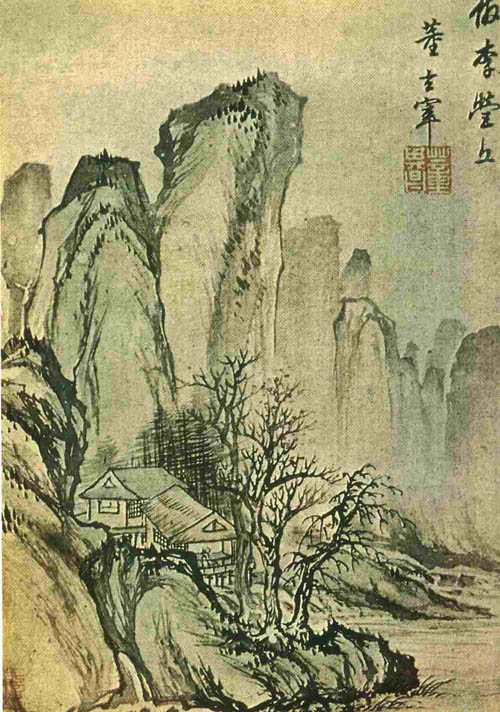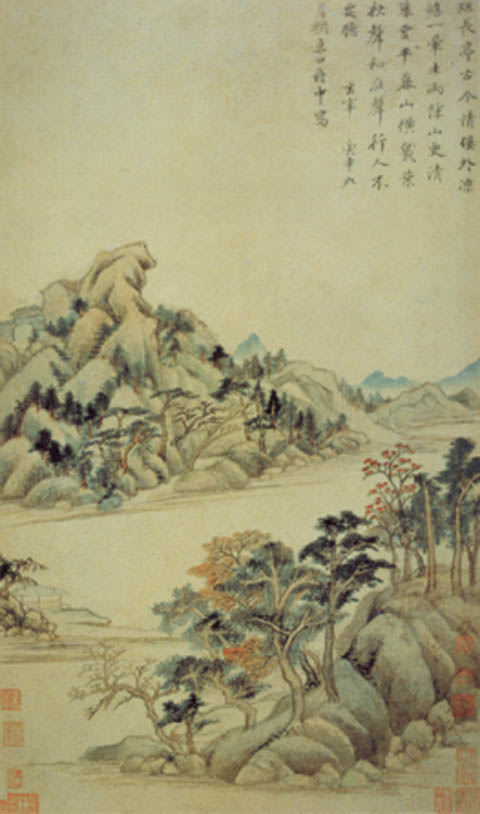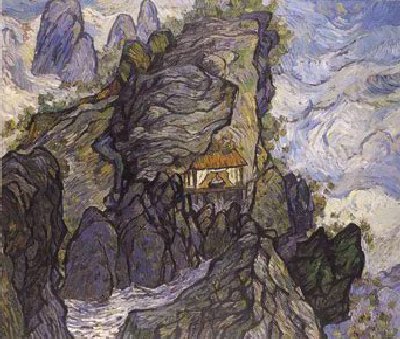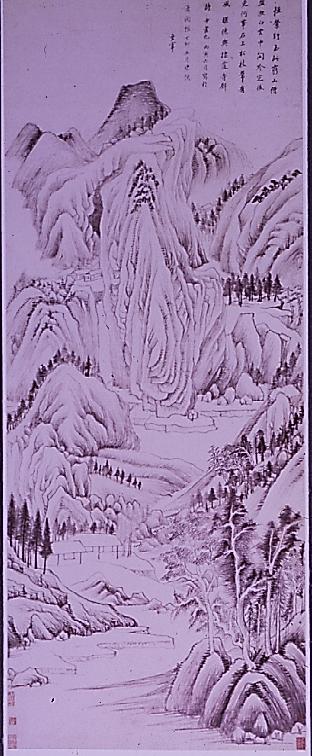| Dong Qichang
The Art History Archive - Chinese Art
Chinese PainterBy Brandi Leigh - 2008. Dong Qichang was not only a noted Chinese landscape painter, calligrapher and theoretician, but he was also a politician who led a controversial life. He lived and died during the Ming Dynasty – the last dynasty in China to be ruled by the Hans. Dong Qichang was born was born to a poor but scholarly family in 1555 in Huating (now Shanghai) of China. At the age of 12 he took and passed a civil service exam where he won a place at the Government School. At 17 he took the imperial civil service exam, however placed in second because although bright, his calligraphy was messy. Being a perfectionist, Qichang spent the next few years training to become a famous calligrapher. By age 35 he had become a high ranking official of the imperial government, and was recognized for his calligraphy skills, especially in grass and running hand. In 1590 Qichang traveled to Peking to serve at the Imperial Academy as the tutor to the prince of China. Nine years later he became involved in some political upset and pleaded illness to the court which led to his temporary retirement. By 1604 he returned to the Academy; and less than a year later he was giving an exam when the students became angry and had an uprising against him. He was declared innocent but still went back into retirement to stay out of the public eye. Women who came to his home with grievances were beaten and insulted which led to his house being torched by an angry mob.
 Qichang stayed in retirement until 1622 when he was hired on to assemble a history of the Ming Dynasty. However he was forced to retire when more political upsets called for him to once again leave his position. In 1631 he returned to Peking yet again to tutor the crown prince. By 1634 he was ready for true retirement and focused on his art until he passed away in 1636. Qichang was busy with work and politics which left him little time to paint; It was during his years of retirement that he was able to do a majority of his paintings. Qichang’s paintings were always in the form of expression, he was careful to not be too slick with his paintings. He wrote a lot on the subject of Chinese painting, dividing art into a “northern school” which taught about acquiring truth through art, and a “southern school” which stressed an almost intuitive understanding. The names are misleading as the “north” and “south” descriptors refer to Chan Buddhism rather than geographical locations. Qichang favored the Southern School as it was based on the principles of calligraphy. He painted very stark, stressed forms with very abnormal spatial renderings.
Dong Qichang almost always painted "pure landscapes" or landscapes without figures, without narrative interest, without some element of human interest. His paintings avoided naturalism because, he said, a painting cannot begin to equal the beauty of the real world. But on the other hand, the natural world could not equal what an artist could do with brush and ink. This painting is one which has several layers of meaning to it. In one sense, it appears to be like a map, a painting of a Buddhist monastery on a mountain. It also is a demonstration of the artist's skill with the brush and the particular principles of composition that he promoted in his own writings about theory. It is a painting which demonstrates his knowledge of "old" styles, of the monumental style, in particular. It is also close to abstract in the dynamism of the forms which create some visual turmoil. This may be the deepest message, a personal and political statement in which the artist takes an old and familiar type which had been associated with order and stability, and deliberately turns it into a painting of disorder and instability. Today Qichang’s ideas continue to influence Chinese aesthetic theory.
Artwork by Dong QichangDong Qichang - Wanluan Thatched Hall - 1597 Dong Qichang - Poetic Feeling at Qixia Monastery - 1626 Dong Qichang - Autumn Scenery - Date Unknown Dong Qichang - Blue - Date Unknown Dong Qichang - Caligraphy - Date Unknown Dong Qichang - Wolf Mountain - Date Unknown
 |
|

